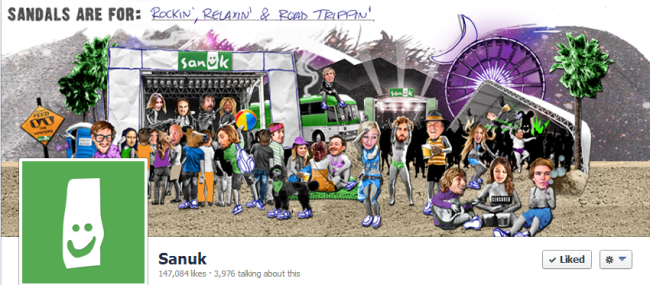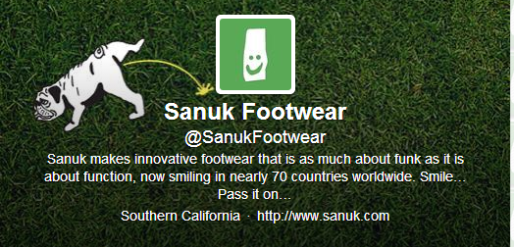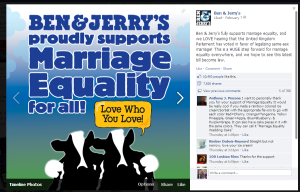Sanuk was founded in 1997, in Southern California by a man named Jeff Kelley. Kelly had been a part of the surfing industry for years before he got the itch to start his own brand. According to Sanuk’s website, Kelly stated, “…I decided to start my own brand done my way using new and interesting materials from all over the world.” Eventually he created Sanuk, which is a brand focused on footwear made from unique materials for both men and women. The first shoe created was called “Fur Real” which was made out of indoor carpet.
Saunk means “fun” in Tai and their company slogan is “Smile, Pass it on!”. This fun-loving, energetic brand has a consistent voice throughout all of their social media channels. Each channel gives off a goofy and spirited sense of humor. Fun and happiness is what this brand strives for and Sanuk can be found on Facebook, Twitter, Youtube, tumblr, Pintrest , Instagram and google plus.
Based on their Twitter page, consumers can see what a laid back and humorous brand they are. They have 11,204 followers and tweet several times a day about various events that their consumers would enjoy or that the brand is involved in.
Saunk also has a great Pintrest page with 2, 779 pins and 4,586 followers. They pin images of their own products as well as videos, quotes, songs etc.
Although they are present on many channels, Saunk’s Facebook fan page is phenomenal. Like Wordofmouth.org says, their page is simple, yet they have spectacular content that connects consumers to the brand. They have 147,083 likes and they always post at lest once a day. According to Sysamos, they have a 99% favorable sentiment on Facebook and 54 wall posts with 5571 likes & 271 comments in the last seven days. They had103.2 likes and 5 comments per wall post as well. This brand is small compared to some of the other major footwear brands, but it is able to hold its own weight and bond with consumers well through social media.
Saunk is able to create engaging content that is relevant to all their consumers. For example, they often post bright, vibrant pictures of consumers enjoying their shoes out in nature. The picture below had 961 likes and is simple, yet shows a consumer relaxing among nature,just enjoying life. This type of post embodies the mission of the brand and consumers love to see others enjoying the product as it should be enjoyed.
Sanuk also is able to promote their brand on Facebook without directly advertising their products. Simple posts like the two below are entertaining and sharable without directly promoting their shoes. Again, their sense of humor is also enjoyable and people are likely to pass the content on to their friends. The first picture received almost 550 likes and 23 shares and the second received 803 likes and 26 shares.
Another great thing that Sanuk does is that they do not only focus on their own products. As seen below, the brand is addressing a leader who is a “Champion of Change”. They get to go to The White House and are recognized for their work on fighting climate change. Although this does not have to do directly with their products, this piece of news is interesting to their consumers. They also provide links in which consumers can watch the event which can create even more awareness for the brand and its humanitarian goals. Content like this is great because consumers are able to see that the brand has other interests outside of their products and are able to take time out of their day to promote someone else.
I did not know much about the brand prior to this case study, but looking at Sanuk’s social media pages made me want to be one of their consumers as well. I loved interacting with their social media pages and each one drew me in. I learned that this brand also is partnered with organizations that are doing great things for our world and the people in it. For example, they are partnered with Operation Smile, wich gives free reconstructive surgery for kids who have various facial deformities. The more I look into Sanuk, who they are and what the stand for, the more I want to be apart of their community and get more involved with their mission. Their social strategy is successful if it is able to entice people who have not been very engaged with the brand prior to connecting to them on social media platforms.








